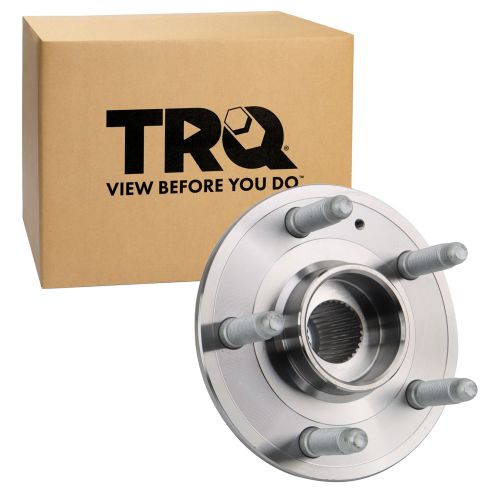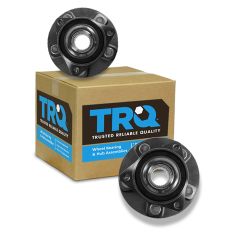1ASHF00404-Chevrolet Cadillac Wheel Bearing & Hub Assembly TRQ BHA54091

Replaces
2009 Cadillac CTS Rear Driver Side Wheel Bearing & Hub Assembly TRQ BHA54091

Product Reviews
Loading reviews
4.17/ 5.0
6
6 reviews
A 1 satisfaction
March 12, 2018
The hub fit perfect. And the tutorial on how to remove and install really help. I'm a customer for life now.
May be a defective replacement part
May 30, 2018
I really had great delivery...less than 24 hrs! Wow!
However with less than 200 miles i have to take assembly apart as noisey wheel has progressively.gotten louder...will follow up upon disassembly
Quick and Efficient
May 3, 2019
I ordered the part and it was here in two days as promised. The part was an exact fit and my car sounds and feels so much better. A1 has the best customer service and makes it easy for the DIY'er.
Quick service
February 27, 2020
Parts where recieved within a couple days of ordering. Staff was kind and friendly!
2013 Camaro rear wheel bearing
September 21, 2023
I were very pleased with the order it fit just like you said it would I will continue ordering parts from you all
Thanks Richard.
October 12, 2024
Part fit perfectly. Difficulty removing old psrt,good video helped. Had to remove entire knuckle and take to machine shop to remove frozen bolt. Put it back together all is good
Customer Q&A
Does this have the built in ABS tone ring sensor?
June 25, 2017
10
the sensor is on the other part and it reads the bearings on the hub as it turns
June 26, 2017
Bruce K
10
Yes, The magnetic ring sensor is on the back side of the hub
March 12, 2018
Lonza D
Will this fit a 2008 Cadillac cts4 with all wheel drive?
May 12, 2019
10
Yes, according to the information you provided, this part will fit your vehicle.
May 12, 2019
Emma F
I have a 2010 cts 4 I believe its AWD would these fit the rear?
May 22, 2019
10
This kit is only able to fit for the front.
May 23, 2019
Emma F
is it one item or a pair ?
February 9, 2022
10
Hello, this is just one wheel hub.
February 9, 2022
Ricale A
Will this fit the drivers side rear on a 2012 cadillac cts4?
March 14, 2023
10
Hello, we would happy to confirm fitment could you reply back with your VIN# please?
March 15, 2023
Ricale A
10
Yes, this will fit the driver rear location on your 2012 Cadillac CTS4 AWD.
March 16, 2023
T I
10
Yes, this part will fit your vehicle.
March 16, 2023
Jean O
Double checking to see if this fits 2009 cadillac cts AWD rear passenger?
September 9, 2023
10
Yes, this part will fit your vehicle.
September 12, 2023
Emma F
Cadillac is a registered trademark of General Motors Company. 1A Auto is not affiliated with or sponsored by Cadillac or General Motors Company.
See all trademarks.












